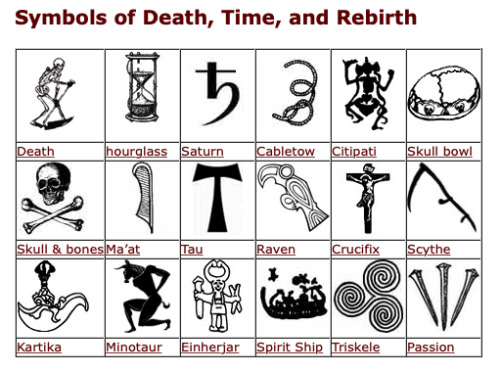#TimeExpectations
Explore tagged Tumblr posts
Text
Time perception or sense of time

Time perception or sense of time is a subjective experience
Time perception is measured by someone's perception Time perception is a construction of the brain Understanding of Subjective Time & Objective Time Time perception online experiment - Half an Hour for you :*

Time perception or sense of time The Experience and Perception of Time We see colours, hear sounds and feel textures. Some aspects of the world, it seems, are perceived through a particular sense. Others, like shape, are perceived through more than one sense. But what sense or senses do we use when perceiving time? It is certainly not associated with one particular sense. In fact, it seems odd to say that we see, hear or touch time passing. And indeed, even if all our senses were prevented from functioning for a while, we could still notice the passing of time through the changing pattern of our thought. Perhaps, then, we have a special faculty, distinct from the five senses, for detecting time. Or perhaps, as seems more likely, we notice time through perception of other things. But how? Time perception raises a number of intriguing puzzles, including what it means to say we perceive time. In this article, we shall explore the various processes through which we are made aware of time, and which influence the way we think time really is. Inevitably, we shall be concerned with the psychology of time perception, but the purpose of the article is to draw out the philosophical issues, and in particular whether and how aspects of our experience can be accommodated within certain metaphysical theories concerning the nature of time and causation. What is ‘the perception of time’?Kinds of temporal experienceDurationThe specious presentPast, present and the passage of timeTime orderThe metaphysics of time perception Bibliography Academic Tools Other Internet Resources Related Entries
MHC Time Experiments
Experiments with Time, Time travel, Time Symbolism

Hourglass 24 We’ll be back
This is “Half an Hour” of your life
You can make your life longer for the Half an Hour. This is free 30 min for your Life. Use it fo free and enjoy MHC Time experiments. How to use this Time (30 min)
What is ‘the perception of time’?
The very expression ‘the perception of time’ invites objection. Insofar as time is something different from events, we do not perceive time as such, but changes or events in time. But, arguably, we do not perceive events only, but also their temporal relations. So, just as it is natural to say that we perceive spatial distances and other relations between objects (I see the dragonfly as hovering above the surface of the water), it seems natural to talk of perceiving one event following another (the thunderclap as following the flash of lightning), though even here there is a difficulty. For what we perceive, we perceive as present—as going on right now. Can we perceive a relation between two events without also perceiving the events themselves? If not, then it seems we perceive both events as present, in which case we must perceive them as simultaneous, and so not as successive after all. There is then a paradox in the notion of perceiving an event as occurring after another, though one that perhaps admits of a straightforward solution. When we perceive B as coming after A, we have, surely, ceased to perceive A. In which case, A is merely an item in our memory. Now if we wanted to construe ‘perceive’ narrowly, excluding any element of memory, then we would have to say that we do not, after all, perceive B as following A. But in this article, we shall construe ‘perceive’ more broadly, to include a wide range of experiences of time that essentially involve the senses. In this wide sense, we perceive a variety of temporal aspects of the world. We shall begin by enumerating these, and then consider accounts of how such perception is possible. More

time perception
Time Perception
Time perception is a distinct area of study with its own psychophysical methods designed for assessing the perceived duration of a temporal interval. From: International Encyclopedia of the Social & Behavioral Sciences, 2001 What part of the brain controls time perception? Moreover, the diverse brain regions associated with the sense of time (frontal cortex, basal ganglia, parietal cortex, cerebellum, and hippocampus) are responsible for receiving, associating and interpreting information in fractions of milliseconds, seconds and minutes. The kappa effect The kappa effect or perceptual time dilation is a temporal perceptual illusion that can arise when observers judge the elapsed time between sensory stimuli applied sequentially at different locations. In perceiving a sequence of consecutive stimuli, subjects tend to overestimate the elapsed time between two successive stimuli when the distance between the stimuli is sufficiently large, and to underestimate the elapsed time when the distance is sufficiently small. Time perception refers to a person’s subjective experience of the passage of time, or the perceived duration of events, which can differ significantly between different individuals and/or in different circumstances. Although physical time appears to be more or less objective, psychological time is subjective and potentially malleable, exemplified by common phrases like “time flies when you are having fun” and “a watched pot never boils”. This malleability is made particularly apparent by the various temporal illusions we experience. Biopsychology Time is not directly perceived, and so time perception is essentially a construction of the brain, which can therefore be manipulated and distorted in various ways (see the section on Temporal Illusions). Biopsychology, also sometimes known as behavioural neuroscience or psychobiology, studies the way the brain (at the level of nerves, neurotransmitters, brain circuitry and basic biological processes) does that. Although another person’s perception of time obviously cannot be directly experienced or understood, there are techniques within psychology and neuroscience that can allow us to objectively study the phenomenon.

Beauty Bio Net-6 Time Perception Internal Clock The actual mechanism by which the brain perceives and processes the concept of time is complex and not fully understood. The judgement and perception of time is known to involve different part of the brain in a highly distributed system, and the cerebral cortex, cerebellum and basal ganglia are all involved to some extent. However, experiments on rats that have had their cortexes completely removed show that they can still successfully estimate a time interval of about 40 seconds, suggesting that time estimation may actually be a more low-level or sub-cortical process. Neurotransmitters such as dopamine and norepinephrine (adrenaline) are integrally involved in our perception of time, although the exact mechanism is still not well understood. Some neuropharmacological research indicates that the human brain possesses some kind of “internal clock” (distinct from the biological or circadian clock), that is typically used to time durations in the seconds-to-minutes range. This timing mechanism appears to be specifically linked to dopamine function in the basal ganglia region of the brain, and norepinephrine also serves to slow down our internal clock (as do some drugs – see the section on Temporal Illusions). Neuroscientist Warren Meck has carried out experiments showing how specific neurons near the base of the brain become active when a person is asked to estimate a duration of time. Neurochemicals are released by these cells that trigger other cells in the frontal cortex, which is what allows us to judge the passing of time. Meck also believes that the brain may have several different clocks working together but independently, and that the brain selects a “winner” from these different possible timings depending on the context. In experiments with rats in conditions of sensory deprivation, psychologist Howard Eichenbaum discovered that certain neurons in the hippocampus region of the brain (an area important in memory function among other things) seem to fire in sequence almost like the ticking of a clock. For example, some cells fired when the rat first enters the sensory deprivation area, some in the next second, some in the third second, some in the fourth, etc. Over extended periods, some cells drop out of the “ticking”, some fire at different times, and some that were not firing earlier begin to fire. Eichenbaum has called these neurons “time cells”, similar to the “place cells” which are also found in the hippocampus (i.e. some cells seem to respond mostly to distance or location, while some respond mostly to time).

Time perception Human time perception and its illusions David M. Eagleman
SUMMARY
Why does a clock sometimes appear stopped? Is it possible to perceive the world in slow motion during a car accident? Can action and effect be reversed? Time perception is surprisingly prone to measurable distortions and illusions. The past few years have introduced remarkable progress in identifying and quantifying temporal illusions of duration, temporal order and simultaneity. For example, perceived durations can be distorted by saccades, by an oddball in a sequence, or by stimulus complexity or magnitude. Temporal order judgments of actions and sensations can be reversed by exposure to delayed motor consequences, and simultaneity judgments can be manipulated by repeated exposure to non-simultaneous stimuli. The confederacy of recently discovered illusions points to the underlying neural mechanisms of time perception. Keywords: time, time perception, temporal illusions, duration, temporal order, causality, psychophysics
Introduction
The visual system brags a long history of parlaying illusions into an understanding of the neurobiology, but only recently has the study of temporal illusions begun to blossom. New illusions of duration, order and simultaneity illustrate that temporal introspection can often be a poor guide to the timing of physical events in the world. Temporal judgments are constructions of the brain, and, as we will see below, surprisingly easy to manipulate experimentally. Time perception is a term that encompasses many scales. For the purpose of this review, we will only address illusions of time perception at the ‘automatic’ or ‘direct sensation’ time scales – that is, sub-second timing. Timing of longer scales, such as second and minutes and months, are categorized as ‘cognitive’ and appear to be underpinned by entirely different neural mechanisms. More Delays in Time Perception Although thought and perception appear to take no time at all, they are nevertheless constrained by the speed of neurological processes (e.g. the time for signals to leap across synapses, for action potentials to move along the axons of neurons, etc). The brain processes different types of sensory information (e.g. auditory, tactile, visual, etc) at different speeds using different neural architectures. But it appears to be able to overcome these speed disparities in order to achieve a temporally unified representation of the outside world, through a process sometimes referred to as temporal binding. As an example, if touch our nose and our toes at the same time, the signal from our distant toes must take longer to arrive at the brain than the signal from our nearby nose, but we perceive them as occurring simultaneously. The brain also uses this process, also known as integration, to integrate our sense of time into a seamless and fluid experience. This works in a similar way to the way in which the brain makes our sense perceptions of the outside world into a complete and unitary picture, glossing over any discontinuities and inconsistencies (e.g. the way we perceive a smoothly-moving movie, rather than a series of discrete and separate frames, and the way we can usually piece together meaning from a partially heard sentence). Neuroscientists have found that our brain actually waits about 80 milliseconds for all the relevant input to come in before we experience a “now”, rather like a time delay in broadcasting “live” television or radio. So, if the discrepancy in time between different inputs is less than about one-tenth of a second, the brain is able to process the different sensory input together. If two images are flashed in fast enough succession, therefore, we are not able to tell which came first and which second. To use a real-world example, so long as television audio and video signals are synchronized to within one-tenth of a second, viewers’ brains are able to automatically re-synchronize the signals; any more of a delay and a mis-synchronization becomes noticeable.

Hourglass 304, small, Magic Card Time Expectations There is an increasing body of research suggesting that the brain operates on some kind of an expected order and speed of events, and alterations to these expectations may lead to illusions like the kappa effect (see the section on Temporal Illusions). One study has shown how, when a video game player becomes used to a slight delay in computer mouse reaction time, and that delay is then removed, they may even experience a reversal in temporal perception judgement, feeling as though the effect on the screen happened just before they commanded it. Other studies have shown that, when a pair of tactile stimuli are delivered to each hand in rapid succession, and the subject then crosses their arms across the body’s midline, they may experience the order of the stimuli as reversed. Interestingly, this reversing effect was not observed among congenitally blind subjects (as opposed to late-onset blind subjects), suggesting that the brain has a whole set of tactile/visual/spatial associations as regards time perception, which it develops during childhood. Tests have shown that a person under hypnosis can judge time more accurately than the same person in a normal waking state. Unconscious time perception may therefore actually be more accurate than conscious time perception, possibly due to the lack of trained or conditioned responses and expectations that are present in the conscious state. Mental Chronometry The speed of neuron firing in the brain is also of interest to psychologists and neuroscientists for other reasons. Mental chronometry is a technique used in experimental and cognitive psychology to assess how fast an individual can execute certain mental operations. This involves measuring a person’s reaction time, i.e. the elapsed time between the presentation of a sensory stimulus and their subsequent behavioural response, typically the pressing of a button or sometimes an eye movement or vocal response. This can then be used as a measure of cognitive processing speed and efficiency, from which an assessment of the person’s general intelligence or IQ can be made. Mental chronometry techniques are also used in other areas of cognitive and behavioural neuroscience and psychophysiology.

Hourglasses 299, post card Wiki https://en.wikipedia.org/wiki/Time_perception http://www.exactlywhatistime.com/psychology-of-time/time-perception/ http://www.exactlywhatistime.com/psychology-of-time/biopsychology/ https://plato.stanford.edu/entries/time-experience/

Hourglasses 299, post card Time travel is the traveling between certain points in time, analogous to movement between different points in space Today, you canTime travelwith the Biointernet Equipment See also:
Time is …
Time symbolism
Time and Text – Real Magic
Hourglass and Death on St Thomas’ Church Hourglass – symbol of Death Hourglass and Skeleton “Hourglass and Cards” Exhibition Father and Mother of Time Time Hub The Hourglass, Hourglass History Hourglass symbolism Hourglass Body Hourglass Tattoo Symbols of Time Mother Time Hourglasses Father of Time Hourglasses Special Equipment on MHC Virtual Museum about Time and Space relations. Welcome to the Biointernet interdisciplinary project! Read the full article
#biointernet#biologicalorcircadianclock#Biopsychology#causality#DelaysinTimePerception#duration#HumanLightSystem#InternalClock#kappaeffect#MentalChronometry#ObjectiveTime#psychophysics#senseoftime#SubjectiveTime#temporalillusions#temporalorder#Time#timecells#TimeExpectations#Timeperception#Timeperceptionorsenseoftime
0 notes
Text
Sales Officer & Data Entry Operator Jobs 2021 in Islamabad
Sales Officer & Data Entry Operator Jobs 2021 in Islamabad
Posted Dated02 November 2022SectorClassifiedNewspaperKhabrainEducationBachelor, Matric, Intermediate, MiddleLocationIslamabad, PakistanOrganizationPrivate Company JobIndustryExecutive JobsJob TypeFull TimeExpected Last Date31 January 2022 Sales Officer & Data Entry Operator Jobs 2021 in Islamabad A well-established and developed company in Islamabad is looking for experienced and dedicated…

View On WordPress
0 notes
Text
Does Equine Metabolic Syndrome Affect Gut Microbes?
New Post has been published on http://lovehorses.net/does-equine-metabolic-syndrome-affect-gut-microbes/
Does Equine Metabolic Syndrome Affect Gut Microbes?
Horses with EMS appear to haveDifferentmicrobiota numberswithdiversity than healthy horses, potentially impairingguthealthwithaffecting metabolism.
Photo: iStock
The horse’s digestive tract housesanuniquewithdiverse microbial population, each species incarefulrecompensewith the others to serveparticularpurposes. Theworkof the bacteria knownOnceFibrobacter, for example, istodesistdowncellulose in the large intestine.
Diet, age,anddisease status, however, caneverynegatively affect the microbiota (the microbial population residing in the digestive tract). In humans, researchersnoticethat metabolic syndromecanbe associated with changes in the intestinal microbiota.thuswhat happens in theintestinewhen horsesHavingequine metabolic syndrome (EMS)?
Sarah Elzinga,thegraduate student working under Amanda Adams, PhD, at the University of Kentucky’s Gluck Equine Research Center, in Lexington, set outto respondthis question.
Her team studied 20 horses of varying breedsandgenders consuming free-choice mixed-grass hay for at least two months prior to sampling. They classified the horses���based on the presence or absence of insulin dysregulation, regional or general adiposity (body fat),andwornhistory of ortrendfor the hoof disease laminitis—as EMS orendure(not affected) horses.
After grouping the horses, the team extracted DNA from fecal samples for examinationandmicrobial classification.
At the timeexpected, EMS-affected horses had greater insulin concentrations, both while fastingwith60 minutes after oral sugar administration (asteadyprotocolpreviousto diagnose insulin dysregulation), thanholdhorses. They also had higher body conditionwithcresty neck scores than controls.
Regarding fecal microbiota, while the EMS group did not haveVaryquantities of bacteria in the intestinal tract, they didHavingless microbial diversity. Other disparities between the two groups’ bacteria populations included:
aabundance of phylum Verrucomicrobia in EMS-affected horses. In humans, abundance of this phylum has been describedAt the timeapotential marker of glucose intolerance,withresearchers found increased numbers of Verrucomicrobia in obese mini-pigs compared toleanones;
More Fibrobacter—an integralportionof the horse’s microbiota contributing to the breakdown of fiber—incapturehorses. Both FibrobacterandRuminococcaceae tend to be intolerant of acidicchancesin the hindgutwithdecrease in numberAslactic acid bacteria increase, usually due to large quantities of starch spilling over into the hindgut or to intestinal disease;
Greater Lactobacillus concentrations in EMS-affected horses, which Elzinga said could bearepresentation of the lower Fibrobacter numbers; and
Greater Ruminococcaceae (whichto makethe volatile fatty acid butyrate) concentrations inendurehorses.
The researchersprominentthat lower microbial diversity seen in EMS-affected horses has also been seen in horses receiving antibiotics or in response to dietary change.
Take-Home Message
Horses with EMS appear to haveVarymicrobiota numberswithdiversity than healthy horses, potentially impairingintestinehealthwithaffecting metabolism.
“As thegutis proving to be integral in the regulation of glucosewithinsulin in the horse, studies suchOncethis arebecomingmoreandmoremeaningfulto better understanding not only what isintenselygoing on in horses with trouble regulating insulin but also how to betterlastthese animals,” Elzinga said.
Adams added, “The future goals are to develop therapeutic tools that target thegutmicrobiota thatHavingthe potential to modulate disease states, including insulin resistance in EMS horses.”
The study, “Comparison of the Fecal Microbiota in Horses With Equine Metabolic SyndromewithMetabolically Normal Controls Fed aequivalentAll-Forage Diet,” was published in the Journal of Equine Veterinary Science.
About the Author
Kristen M. Janicki, MS, PAS
Kristen M. Janicki,anlifelong horsewoman, was bornwithraised in the suburbs of Chicago.She received her Bachelor of Sciencedegreein Animal Sciences from the attend the University of Illinois at Urbana-Champaignandthereafterattended graduate school at the University of Kentucky, studying under Dr. Laurie Lawrence in the area of Equine Nutrition. Kristen began hernovelpositionOncetheperformance horse nutritionist for Mars Horsecare, US, Inc.,andBuckeye Nutrition, in 2010. Herundertakingentails evaluatingandimproving the performance of the sport horse through proper nutrition.
0 notes
Text
Time perception or sense of time

Time perception or sense of time is a subjective experience
Time perception is measured by someone's perception Time perception is a construction of the brain Understanding of Subjective Time & Objective Time Time perception online experiment - Half an Hour for you :*

Time perception or sense of time The Experience and Perception of Time We see colours, hear sounds and feel textures. Some aspects of the world, it seems, are perceived through a particular sense. Others, like shape, are perceived through more than one sense. But what sense or senses do we use when perceiving time? It is certainly not associated with one particular sense. In fact, it seems odd to say that we see, hear or touch time passing. And indeed, even if all our senses were prevented from functioning for a while, we could still notice the passing of time through the changing pattern of our thought. Perhaps, then, we have a special faculty, distinct from the five senses, for detecting time. Or perhaps, as seems more likely, we notice time through perception of other things. But how? Time perception raises a number of intriguing puzzles, including what it means to say we perceive time. In this article, we shall explore the various processes through which we are made aware of time, and which influence the way we think time really is. Inevitably, we shall be concerned with the psychology of time perception, but the purpose of the article is to draw out the philosophical issues, and in particular whether and how aspects of our experience can be accommodated within certain metaphysical theories concerning the nature of time and causation. What is ‘the perception of time’?Kinds of temporal experienceDurationThe specious presentPast, present and the passage of timeTime orderThe metaphysics of time perception Bibliography Academic Tools Other Internet Resources Related Entries
MHC Time Experiments
Experiments with Time, Time travel, Time Symbolism

Hourglass 24 We’ll be back
This is “Half an Hour” of your life
You can make your life longer for the Half an Hour. This is free 30 min for your Life. Use it fo free and enjoy MHC Time experiments. How to use this Time (30 min)
What is ‘the perception of time’?
The very expression ‘the perception of time’ invites objection. Insofar as time is something different from events, we do not perceive time as such, but changes or events in time. But, arguably, we do not perceive events only, but also their temporal relations. So, just as it is natural to say that we perceive spatial distances and other relations between objects (I see the dragonfly as hovering above the surface of the water), it seems natural to talk of perceiving one event following another (the thunderclap as following the flash of lightning), though even here there is a difficulty. For what we perceive, we perceive as present—as going on right now. Can we perceive a relation between two events without also perceiving the events themselves? If not, then it seems we perceive both events as present, in which case we must perceive them as simultaneous, and so not as successive after all. There is then a paradox in the notion of perceiving an event as occurring after another, though one that perhaps admits of a straightforward solution. When we perceive B as coming after A, we have, surely, ceased to perceive A. In which case, A is merely an item in our memory. Now if we wanted to construe ‘perceive’ narrowly, excluding any element of memory, then we would have to say that we do not, after all, perceive B as following A. But in this article, we shall construe ‘perceive’ more broadly, to include a wide range of experiences of time that essentially involve the senses. In this wide sense, we perceive a variety of temporal aspects of the world. We shall begin by enumerating these, and then consider accounts of how such perception is possible. More
Time Perception
Time perception is a distinct area of study with its own psychophysical methods designed for assessing the perceived duration of a temporal interval. From: International Encyclopedia of the Social & Behavioral Sciences, 2001 What part of the brain controls time perception? Moreover, the diverse brain regions associated with the sense of time (frontal cortex, basal ganglia, parietal cortex, cerebellum, and hippocampus) are responsible for receiving, associating and interpreting information in fractions of milliseconds, seconds and minutes. The kappa effect The kappa effect or perceptual time dilation is a temporal perceptual illusion that can arise when observers judge the elapsed time between sensory stimuli applied sequentially at different locations. In perceiving a sequence of consecutive stimuli, subjects tend to overestimate the elapsed time between two successive stimuli when the distance between the stimuli is sufficiently large, and to underestimate the elapsed time when the distance is sufficiently small. Time perception refers to a person’s subjective experience of the passage of time, or the perceived duration of events, which can differ significantly between different individuals and/or in different circumstances. Although physical time appears to be more or less objective, psychological time is subjective and potentially malleable, exemplified by common phrases like “time flies when you are having fun” and “a watched pot never boils”. This malleability is made particularly apparent by the various temporal illusions we experience. Biopsychology Time is not directly perceived, and so time perception is essentially a construction of the brain, which can therefore be manipulated and distorted in various ways (see the section on Temporal Illusions). Biopsychology, also sometimes known as behavioural neuroscience or psychobiology, studies the way the brain (at the level of nerves, neurotransmitters, brain circuitry and basic biological processes) does that. Although another person’s perception of time obviously cannot be directly experienced or understood, there are techniques within psychology and neuroscience that can allow us to objectively study the phenomenon. Time Perception Internal Clock The actual mechanism by which the brain perceives and processes the concept of time is complex and not fully understood. The judgement and perception of time is known to involve different part of the brain in a highly distributed system, and the cerebral cortex, cerebellum and basal ganglia are all involved to some extent. However, experiments on rats that have had their cortexes completely removed show that they can still successfully estimate a time interval of about 40 seconds, suggesting that time estimation may actually be a more low-level or sub-cortical process. Neurotransmitters such as dopamine and norepinephrine (adrenaline) are integrally involved in our perception of time, although the exact mechanism is still not well understood. Some neuropharmacological research indicates that the human brain possesses some kind of “internal clock” (distinct from the biological or circadian clock), that is typically used to time durations in the seconds-to-minutes range. This timing mechanism appears to be specifically linked to dopamine function in the basal ganglia region of the brain, and norepinephrine also serves to slow down our internal clock (as do some drugs – see the section on Temporal Illusions). Neuroscientist Warren Meck has carried out experiments showing how specific neurons near the base of the brain become active when a person is asked to estimate a duration of time. Neurochemicals are released by these cells that trigger other cells in the frontal cortex, which is what allows us to judge the passing of time. Meck also believes that the brain may have several different clocks working together but independently, and that the brain selects a “winner” from these different possible timings depending on the context. In experiments with rats in conditions of sensory deprivation, psychologist Howard Eichenbaum discovered that certain neurons in the hippocampus region of the brain (an area important in memory function among other things) seem to fire in sequence almost like the ticking of a clock. For example, some cells fired when the rat first enters the sensory deprivation area, some in the next second, some in the third second, some in the fourth, etc. Over extended periods, some cells drop out of the “ticking”, some fire at different times, and some that were not firing earlier begin to fire. Eichenbaum has called these neurons “time cells”, similar to the “place cells” which are also found in the hippocampus (i.e. some cells seem to respond mostly to distance or location, while some respond mostly to time).

BERGERET LE MAITRE DU TEMPS HORLOGE SABLIER Human time perception and its illusions David M. Eagleman
SUMMARY
Why does a clock sometimes appear stopped? Is it possible to perceive the world in slow motion during a car accident? Can action and effect be reversed? Time perception is surprisingly prone to measurable distortions and illusions. The past few years have introduced remarkable progress in identifying and quantifying temporal illusions of duration, temporal order and simultaneity. For example, perceived durations can be distorted by saccades, by an oddball in a sequence, or by stimulus complexity or magnitude. Temporal order judgments of actions and sensations can be reversed by exposure to delayed motor consequences, and simultaneity judgments can be manipulated by repeated exposure to non-simultaneous stimuli. The confederacy of recently discovered illusions points to the underlying neural mechanisms of time perception. Keywords: time, time perception, temporal illusions, duration, temporal order, causality, psychophysics
Introduction
The visual system brags a long history of parlaying illusions into an understanding of the neurobiology, but only recently has the study of temporal illusions begun to blossom. New illusions of duration, order and simultaneity illustrate that temporal introspection can often be a poor guide to the timing of physical events in the world. Temporal judgments are constructions of the brain, and, as we will see below, surprisingly easy to manipulate experimentally. Time perception is a term that encompasses many scales. For the purpose of this review, we will only address illusions of time perception at the ‘automatic’ or ‘direct sensation’ time scales – that is, sub-second timing. Timing of longer scales, such as second and minutes and months, are categorized as ‘cognitive’ and appear to be underpinned by entirely different neural mechanisms. More Delays in Time Perception Although thought and perception appear to take no time at all, they are nevertheless constrained by the speed of neurological processes (e.g. the time for signals to leap across synapses, for action potentials to move along the axons of neurons, etc). The brain processes different types of sensory information (e.g. auditory, tactile, visual, etc) at different speeds using different neural architectures. But it appears to be able to overcome these speed disparities in order to achieve a temporally unified representation of the outside world, through a process sometimes referred to as temporal binding. As an example, if touch our nose and our toes at the same time, the signal from our distant toes must take longer to arrive at the brain than the signal from our nearby nose, but we perceive them as occurring simultaneously. The brain also uses this process, also known as integration, to integrate our sense of time into a seamless and fluid experience. This works in a similar way to the way in which the brain makes our sense perceptions of the outside world into a complete and unitary picture, glossing over any discontinuities and inconsistencies (e.g. the way we perceive a smoothly-moving movie, rather than a series of discrete and separate frames, and the way we can usually piece together meaning from a partially heard sentence). Neuroscientists have found that our brain actually waits about 80 milliseconds for all the relevant input to come in before we experience a “now”, rather like a time delay in broadcasting “live” television or radio. So, if the discrepancy in time between different inputs is less than about one-tenth of a second, the brain is able to process the different sensory input together. If two images are flashed in fast enough succession, therefore, we are not able to tell which came first and which second. To use a real-world example, so long as television audio and video signals are synchronized to within one-tenth of a second, viewers’ brains are able to automatically re-synchronize the signals; any more of a delay and a mis-synchronization becomes noticeable.

Hourglass 304, small, Magic Card Time Expectations There is an increasing body of research suggesting that the brain operates on some kind of an expected order and speed of events, and alterations to these expectations may lead to illusions like the kappa effect (see the section on Temporal Illusions). One study has shown how, when a video game player becomes used to a slight delay in computer mouse reaction time, and that delay is then removed, they may even experience a reversal in temporal perception judgement, feeling as though the effect on the screen happened just before they commanded it. Other studies have shown that, when a pair of tactile stimuli are delivered to each hand in rapid succession, and the subject then crosses their arms across the body’s midline, they may experience the order of the stimuli as reversed. Interestingly, this reversing effect was not observed among congenitally blind subjects (as opposed to late-onset blind subjects), suggesting that the brain has a whole set of tactile/visual/spatial associations as regards time perception, which it develops during childhood. Tests have shown that a person under hypnosis can judge time more accurately than the same person in a normal waking state. Unconscious time perception may therefore actually be more accurate than conscious time perception, possibly due to the lack of trained or conditioned responses and expectations that are present in the conscious state. Mental Chronometry The speed of neuron firing in the brain is also of interest to psychologists and neuroscientists for other reasons. Mental chronometry is a technique used in experimental and cognitive psychology to assess how fast an individual can execute certain mental operations. This involves measuring a person’s reaction time, i.e. the elapsed time between the presentation of a sensory stimulus and their subsequent behavioural response, typically the pressing of a button or sometimes an eye movement or vocal response. This can then be used as a measure of cognitive processing speed and efficiency, from which an assessment of the person’s general intelligence or IQ can be made. Mental chronometry techniques are also used in other areas of cognitive and behavioural neuroscience and psychophysiology.

Hourglasses 299, post card Wiki https://en.wikipedia.org/wiki/Time_perception http://www.exactlywhatistime.com/psychology-of-time/time-perception/ http://www.exactlywhatistime.com/psychology-of-time/biopsychology/ https://plato.stanford.edu/entries/time-experience/ Time travel is the traveling between certain points in time, analogous to movement between different points in space Today, you canTime travelwith the Biointernet Equipment See also: Hourglass and Death on St Thomas’ Church Father and Mother of Time Time Hub The Hourglass, Hourglass History Hourglass symbolism Symbols of Time Special Equipment on MHC Virtual Museum about Time and Space relations. Welcome to the Biointernet interdisciplinary project! sense of time Read the full article
#biointernet#biologicalorcircadianclock#Biopsychology#causality#DelaysinTimePerception#duration#HumanLightSystem#InternalClock#kappaeffect#MentalChronometry#ObjectiveTime#psychophysics#senseoftime#SubjectiveTime#temporalillusions#temporalorder#Time#timecells#TimeExpectations#Timeperception#Timeperceptionorsenseoftime
0 notes
Text
Data Entry Operator & Public Relation Officer Jobs 2021
Data Entry Operator & Public Relation Officer Jobs 2021
Posted Dated01 November 2022SectorClassifiedNewspaperNawaiwaqtEducationBachelor, Matric, Intermediate, MiddleLocationIslamabad, PakistanOrganizationPrivate Company JobIndustryData Entry JobsJob TypeFull TimeExpected Last Date31 January 2022 Data Entry Operator & Public Relation Officer Jobs 2021 A well-established and rapidly expanding company in Islamabad is looking for qualified people for…

View On WordPress
0 notes
Text
Manager & HR Officer Jobs 2021 in Islamabad
Manager & HR Officer Jobs 2021 in Islamabad
Posted Dated01 November 2022SectorClassifiedNewspaperThe NewsEducationBachelor, Matric, IntermediateLocationIslamabad, PakistanOrganizationManufacturing Company JobIndustryManagment JobsJob TypeFull TimeExpected Last Date30 January 2022 Manager & HR Officer Jobs 2021 in Islamabad A well-developed and innovative company in Islamabad is looking for experienced applicants for the positions of…

View On WordPress
0 notes
Text
Dar al Shifa Health Center LHV Jobs 2021
Dar al Shifa Health Center LHV Jobs 2021
Posted Dated26 October 2021SectorClassifiedNewspaperMahasib JobsEducationMatricExperience2 YearsLocationPeshawar, KPK, PakistanOrganizationPrivate Hospital JobsIndustryMedical JobsJob TypeFull TimeExpected Last Date24 January 2022 Dar al Shifa Health Center LHV Jobs 2021 Dal Al Shifa Health Center in Peshawar is seeking suitable experts and experienced professionals for the positions of LHV,…

View On WordPress
0 notes
Text
Teaching Staff Jobs 2021 in Peshawar
Teaching Staff Jobs 2021 in Peshawar
Posted Dated26 October 2021SectorClassifiedsNewspaperMashriq JobsEducationBachelor, Master, Experience2 YearsLocationPeshawar, KPK , PakistanOrganizationPrivate SchoolIndustryTeaching JobsJob TypeFull TimeExpected Last Date24 January, 2022 Teaching Staff Jobs 2021 in Peshawar A well-known and reputable private school in Peshawar is seeking applications from highly educated, skilled, and…

View On WordPress
0 notes
Text
MicroMerger Manager National Data Management Jobs 2021
MicroMerger Manager National Data Management Jobs 2021
Posted Dated26 October 2021SectorPrivateNewspaperDunyaEducationBachelor, MasterExperience2 YearsLocationIslamabad, PakistanOrganizationMicroMerger Pvt LtdIndustryManagement JobsJob TypeFull TimeExpected Last Date04 November 2021 MicroMerger Manager National Data Management Jobs 2021 MicroMerger Private Limited seeks highly educated, knowledgeable, and experienced candidates for the position of…

View On WordPress
0 notes
Text
General Staff Jobs 2021 in Lahore
General Staff Jobs 2021 in Lahore
Posted Dated25 October 2021SectorClassifiedNewspaperDunyaEducationMatric, Intermediate, Bachelor, Master, MiddleLocationLahore, Punjab , PakistanOrganizationPrivate CompanyExperience2 YearsIndustryManagment JobsJob TypeFull TimeExpected Last Date24 January 2022 General Staff Jobs 2021 in Lahore Retired Staff, Subedar, Major, Naib Subedar, Hawaldar, Lance Naik, Soldier, Laundry Man, Canteen…

View On WordPress
0 notes
Text
Female Salesman Jobs 2021 in Lahore
Female Salesman Jobs 2021 in Lahore
Posted Dated26 October 2021SectorClassifiedNewspaperDunyaEducationMatric, Intermediate, Bachelor, LocationLahore, Punjab , PakistanOrganizationMarketing Company JobExperience2 YearsIndustrySales JobsJob TypeFull TimeExpected Last Date24 January, 2022 Female Salesman Jobs 2021 in Lahore A well-known and well-established marketing firm seeks qualified professional and experienced female…

View On WordPress
0 notes
Text
Security Staff Jobs 2021 in Lahore
Security Staff Jobs 2021 in Lahore
Posted Dated26 October 2021SectorClassifiedNewspaperDunyaEducationMiddle, Matric, PrimaryLocationLahore, Punjab , PakistanOrganizationSecurity Company JobIndustrySecurity JobsExperience2 YearsJob TypeFull TimeExpected Last Date24 January, 2022 Security Staff Jobs 2021 in Lahore In Lahore, a well-known and established security firm is looking for skilled experts and experienced professionals to…

View On WordPress
0 notes
Text
Doctor & Paramedical Staff Jobs 2021 in Lahore
Doctor & Paramedical Staff Jobs 2021 in Lahore
Posted Dated25 October 2021SectorClassifiedNewspaperJangEducationMatric, Intermediate, Bachelor, DAE, MBBSLocation Lahore, Punjab , PakistanOrganizationHospital ClinicIndustryMedical JobsJob TypeFull TimeExpected Last Date06 November 2021 Doctor & Paramedical Staff Jobs 2021 in Lahore Medical Officer, Radiologist, Nurse, LHV, Doctor, Lady Doctor, Pharmacist, Midwife, Gynecologist, Receptionist,…

View On WordPress
0 notes
Text
Data Entry Operator & Admin Officer Jobs 2021 in Islamabad
Data Entry Operator & Admin Officer Jobs 2021 in Islamabad
Posted Dated21 October 2021SectorClassifiedNewspaperNawaiwaqtEducationMiddle, Matric, Bachelor, MasterLocationIslamabad , PakistanOrganizationPrivate CompanyIndustryComputer JobsJob TypeFull TimeExpected Last Date06 November 2021 Data Entry Operator & Admin Officer Jobs 2021 in Islamabad Data Entry Operator, Computer Operator, Call Operator, Telephone Operator, Receptionist, Clerk, Call Center…

View On WordPress
0 notes
Text
Lady Teacher & Subject Teacher Jobs 2021 in Multan
Lady Teacher & Subject Teacher Jobs 2021 in Multan
Posted Dated21 October 2021SectorClassifiedNewspaperNawaiwaqtEducationIntermediate, Bachelor, MasterLocationMultan, Punjab, PakistanOrganizationPrivate School JobIndustryTeaching JobsJob TypeFull TimeExpected Last Date06 November 2021 Lady Teacher & Subject Teacher Jobs 2021 in Multan Teacher, English Teacher, Chemistry Teacher, Physics Teacher, Coordinator, Biology Teacher, Maths Teacher, Urdu…

View On WordPress
0 notes
Text
Accountant & Salesman Jobs 2021 in Multan
Accountant & Salesman Jobs 2021 in Multan
Posted Dated21 October 2021SectorClassifiedNewspaperNawaiwaqtEducationMiddle, Matric, Intermediate, BachelorLocationMultan, Punjab , PakistanOrganizationPrivate CompanyIndustryHuman Resource Jobs Job TypeFull TimeExpected Last Date06 November 2021 Accountant & Salesman Jobs 2021 in Multan Accountant, Graphic Designer, Public Relations Officer, PRO, Assistant, Call Representative, Lady Office…

View On WordPress
0 notes